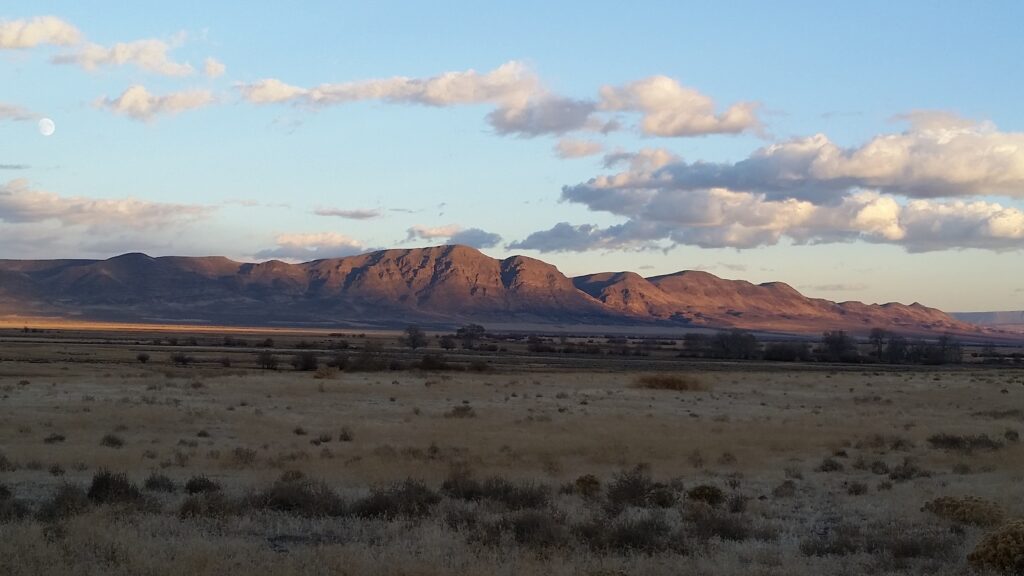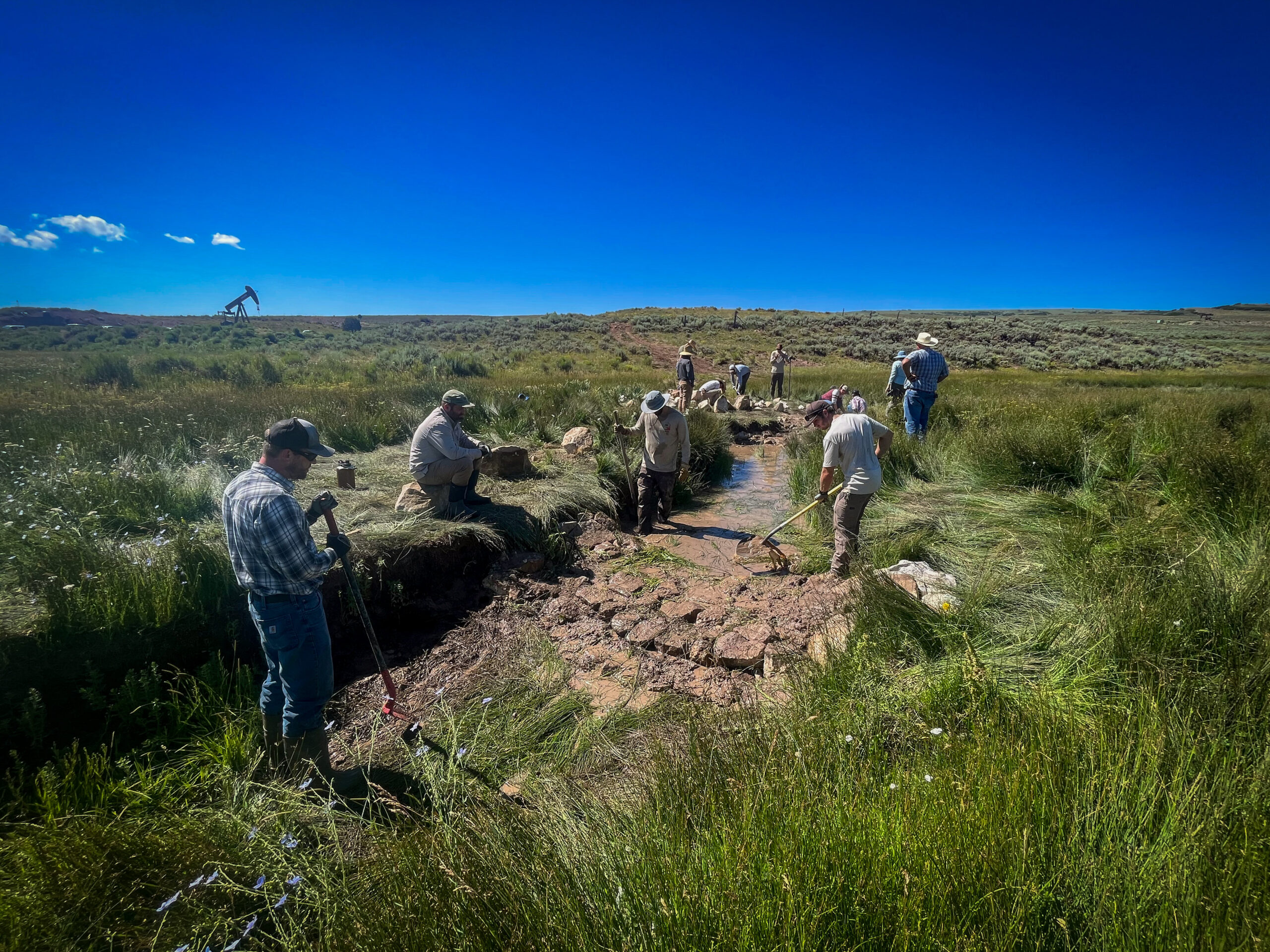
Stitching the Landscape Back Together
Wet meadow restoration work in Utah is being funded by the Bipartisan Infrastructure Law, to the benefit of wildlife and communities.
Megan McGrath
August 9, 2023
In 2021, the Biden Administration committed $10 million per year over the next five years under the Bipartisan Infrastructure Law (BIL) to the U.S. Fish and Wildlife Service (USFWS) for sagebrush ecosystem restoration. To implement this funding for priority projects such as mesic habitat restoration, which helps retain needed water on sagebrush landscapes longer, the U.S. Fish and Wildlife Service (USFWS) is investing in dynamic and successful partnerships across 13 Western states—such as their collaboration with the Utah Division of Wildlife Resources (UDWR) and Watershed Restoration Initiative (WRI) in Utah. This is their story, and is one of many West-wide.
Part 1: The Place
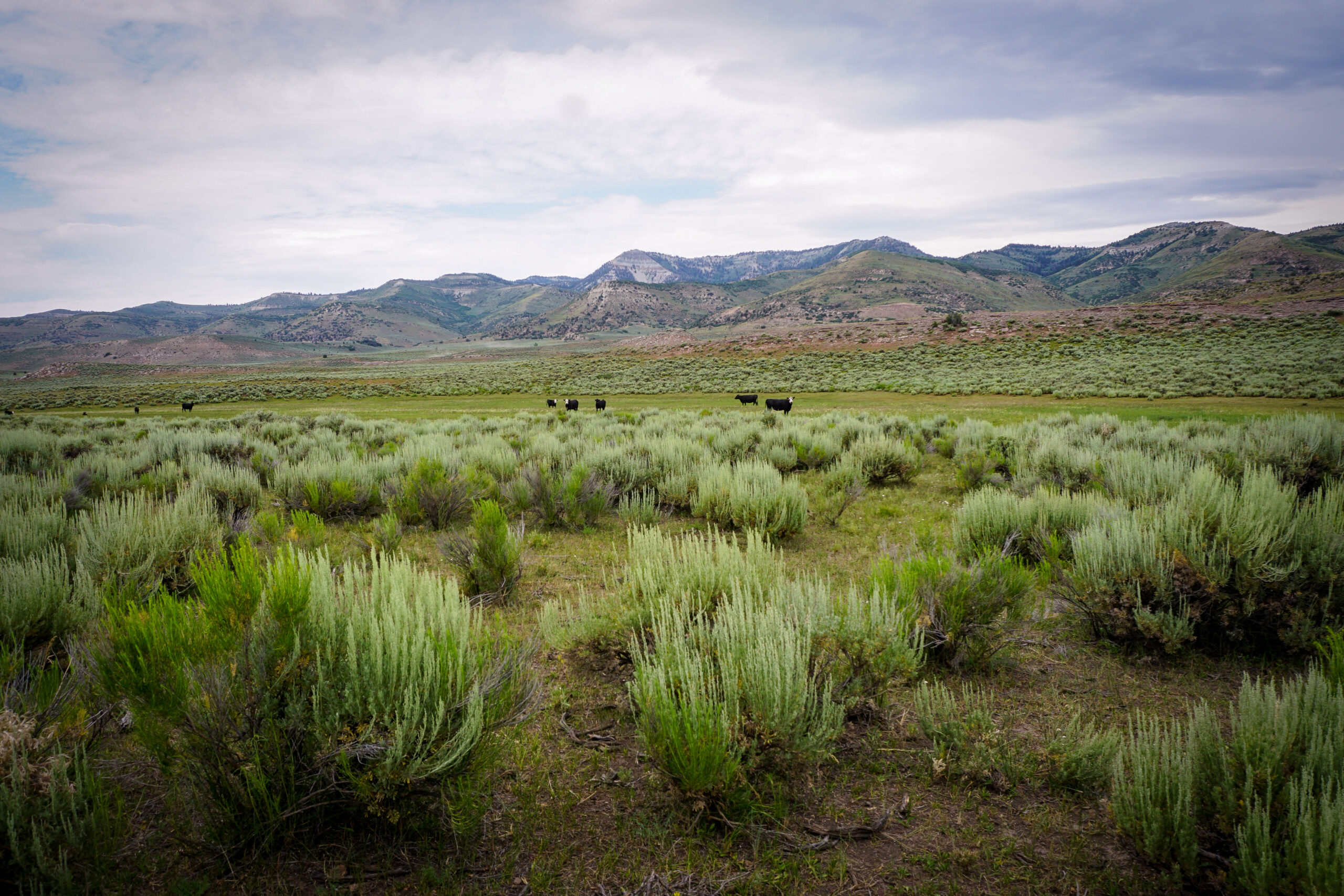
Just one quick glance around this valley in Carbon County, Utah, reveals that it is a productive working landscape.
Rolling hills dusted with sage and bitterbrush dissolve into distant sandstone hillsides that show remnants of Utah’s mining history. An old railroad grade is evident near the horizon, although the tracks are long gone. Here and there, a working oil derrick stands out amidst the surrounding greenery, and cattle eye visitors skeptically.
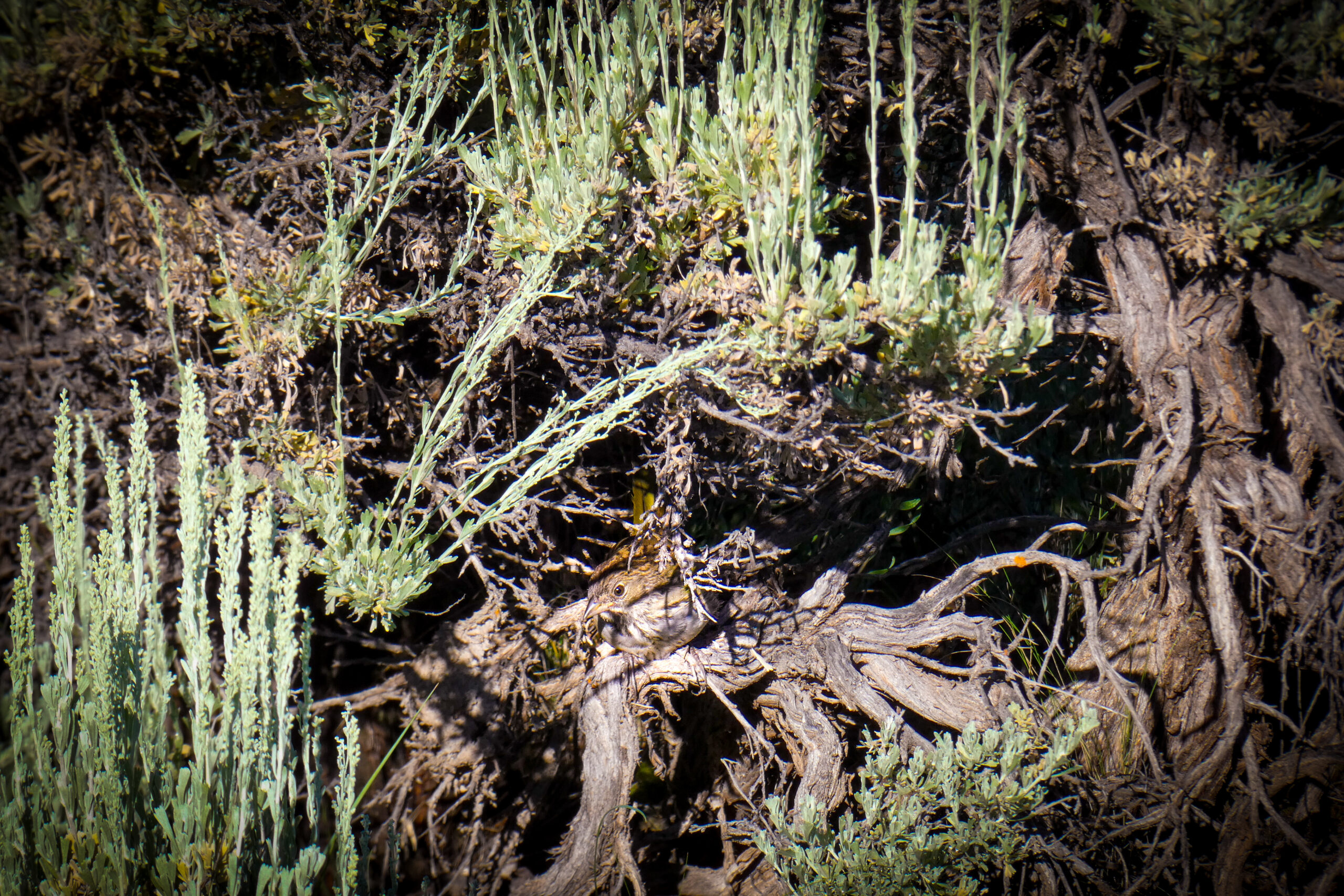
Here in Utah’s Upper Price River watershed, as in many places in the West, native plants and animals reside in working landscapes that support the needs of both human communities and wildlife habitat.
Green-tailed towhees and Brewer’s sparrows call out across the sagebrush upland, and Uinta ground squirrels dash from burrow to burrow.
“It’s not like this is a super pristine untouched area,” TJ Cook, a Restoration Biologist for the Utah Division of Wildlife Resources (UDWR) who knows this landscape well, said. “We have gas wells, and there are roads. But you still get deer and elk that utilize these areas. In spring you’re liable to see Greater Sage-grouse lekking in this area, and in summer you’ll see hens with their broods.”
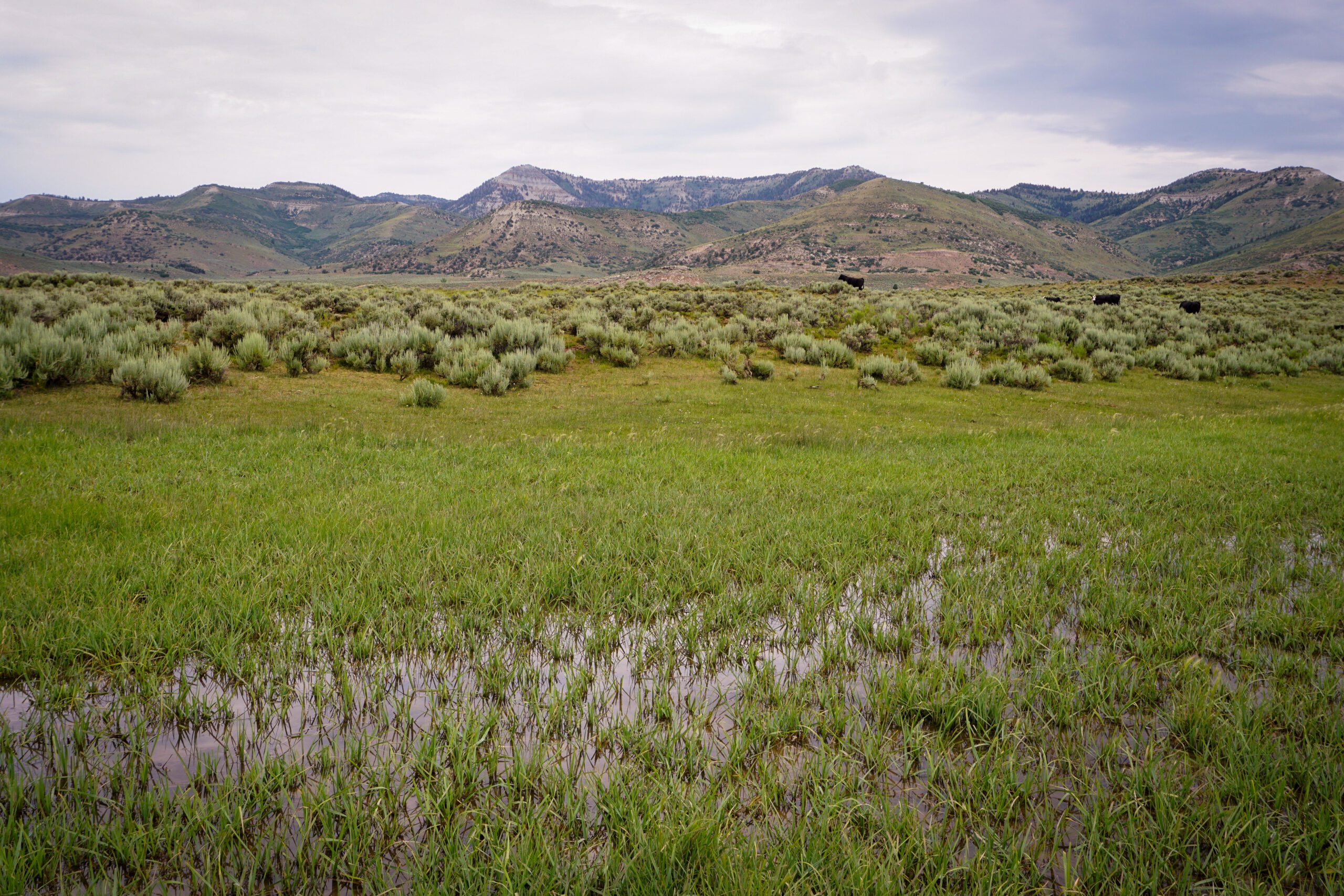
In this valley, higher, drier sagebrush gives way to a wide, lush swathe of fertile soil, inundated seasonally by spring meltwater runoff trickling down from the uplands.
This wet meadow hosts a dazzling array of biodiversity, different from the surrounding sagebrush-covered hills.
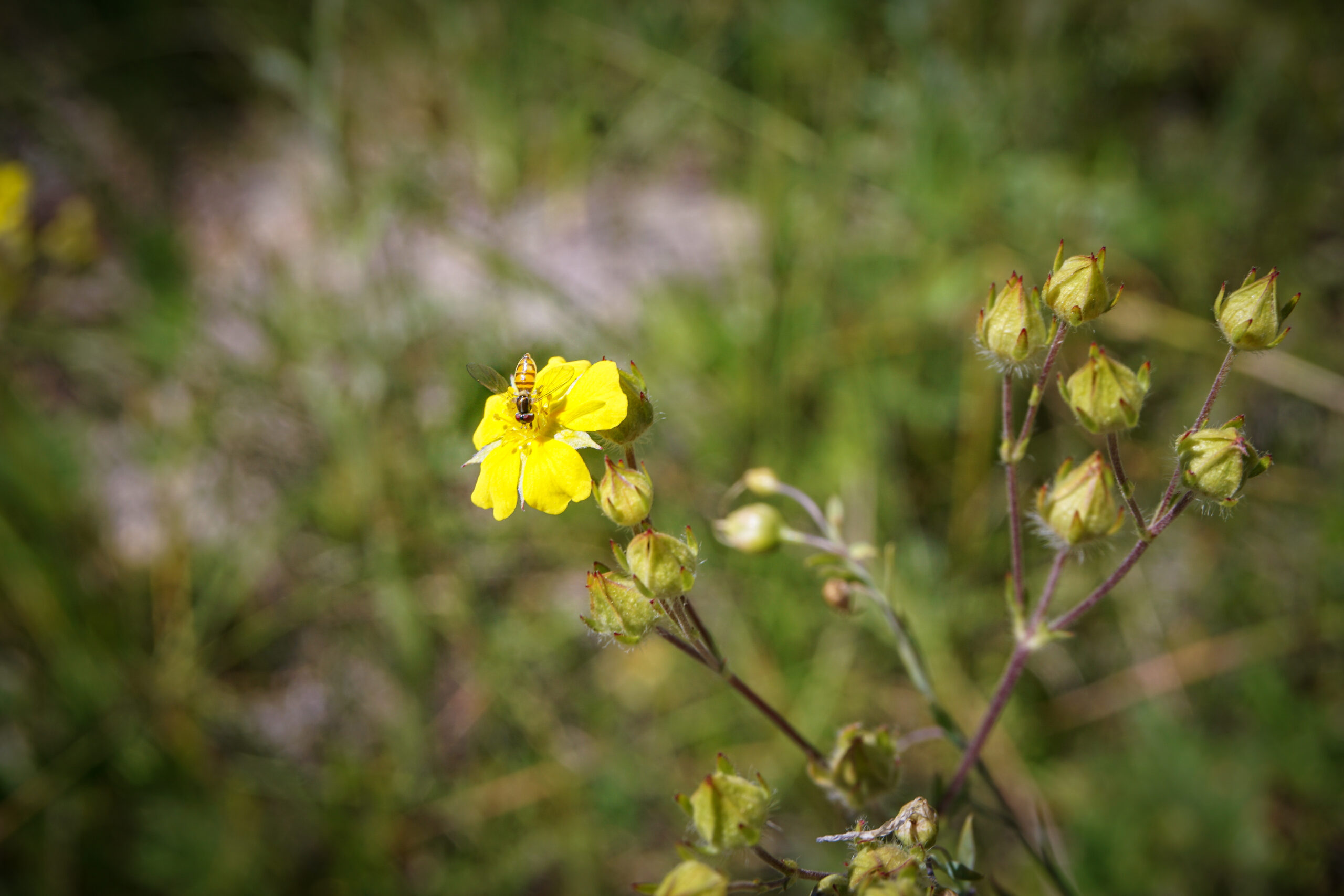
Native flowering forbs like cinquefoil, yarrow, and flax within this wet meadow support a host of pollinating bees, moths, and flies.
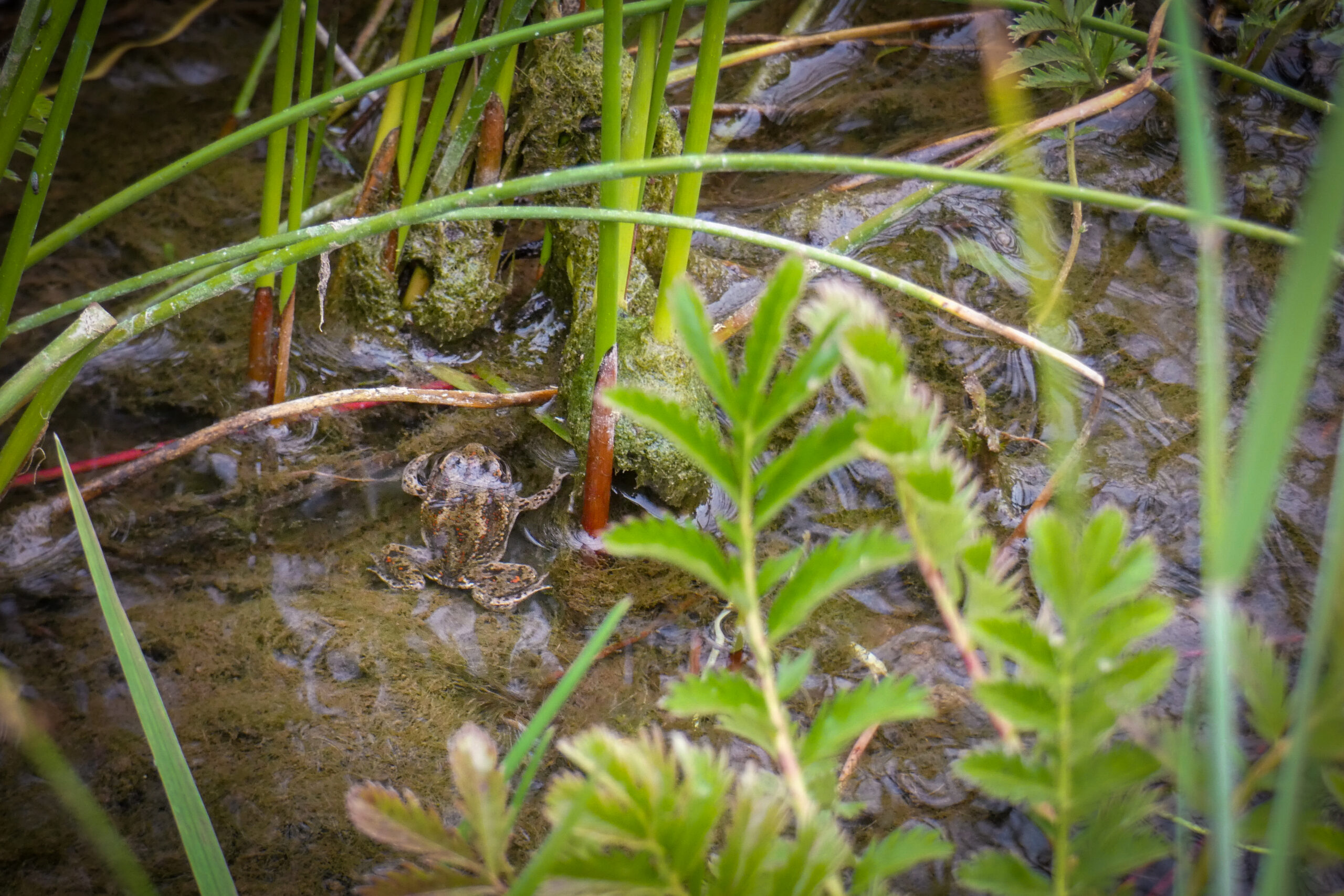
In this wet season, thousands of tiny juvenile Great Basin spadefoot toads, newly metamorphosed out of their aquatic tadpole forms, huddle within the wet meadow’s saturated vegetation.
Clint Wirick, the Utah Program Coordinator for the U.S. Fish and Wildlife Service (USFWS) Partners for Fish and Wildlife Program, described how important wet meadows like this one are for sagebrush ecosystems:
“Acreage-wise, wet meadows make up a small part of the landscape, but pretty much everything goes to them at some point in the year. During the hot part of the year, your vegetation and forage starts to dry up in the uplands, and that vegetation loses its nutritional value. That’s true for grass-eating animals, but also for pollinators—flowers are drying up, too. So animals follow the ‘green line’ into those low-lying wet meadows seasonally and start using the meadow’s resources.”
– Clint Wirick, USFWS
Part 2: The Problem
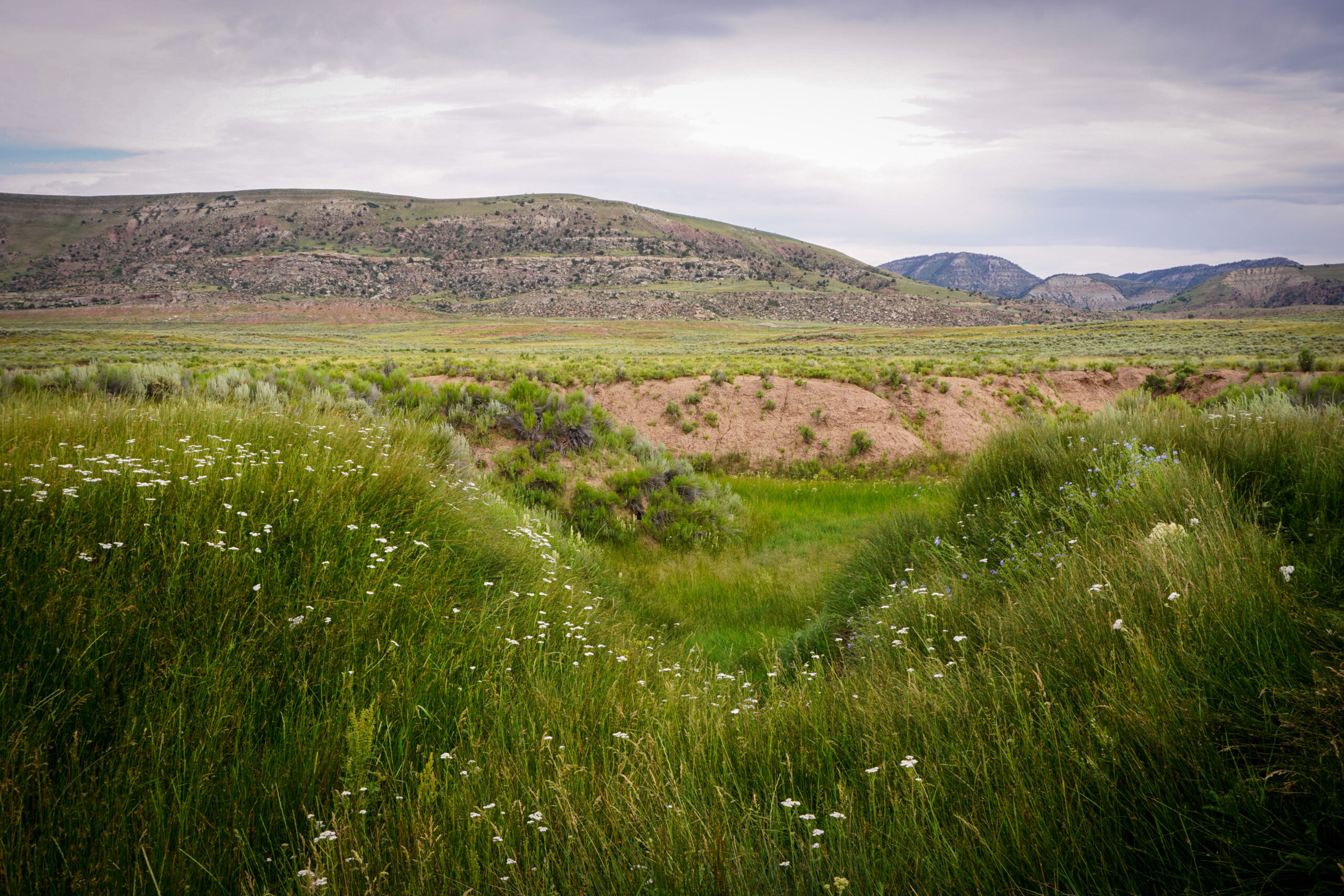
Scanning the landscape within this wet meadow quickly reveals another curious feature: Downslope, the meadow opens up into a wide, yawning gully.
This gully is particularly big; it’s almost as if the surrounding canyons that characterize this part of Carbon County, Utah, are attempting to reproduce themselves within the wet meadow.
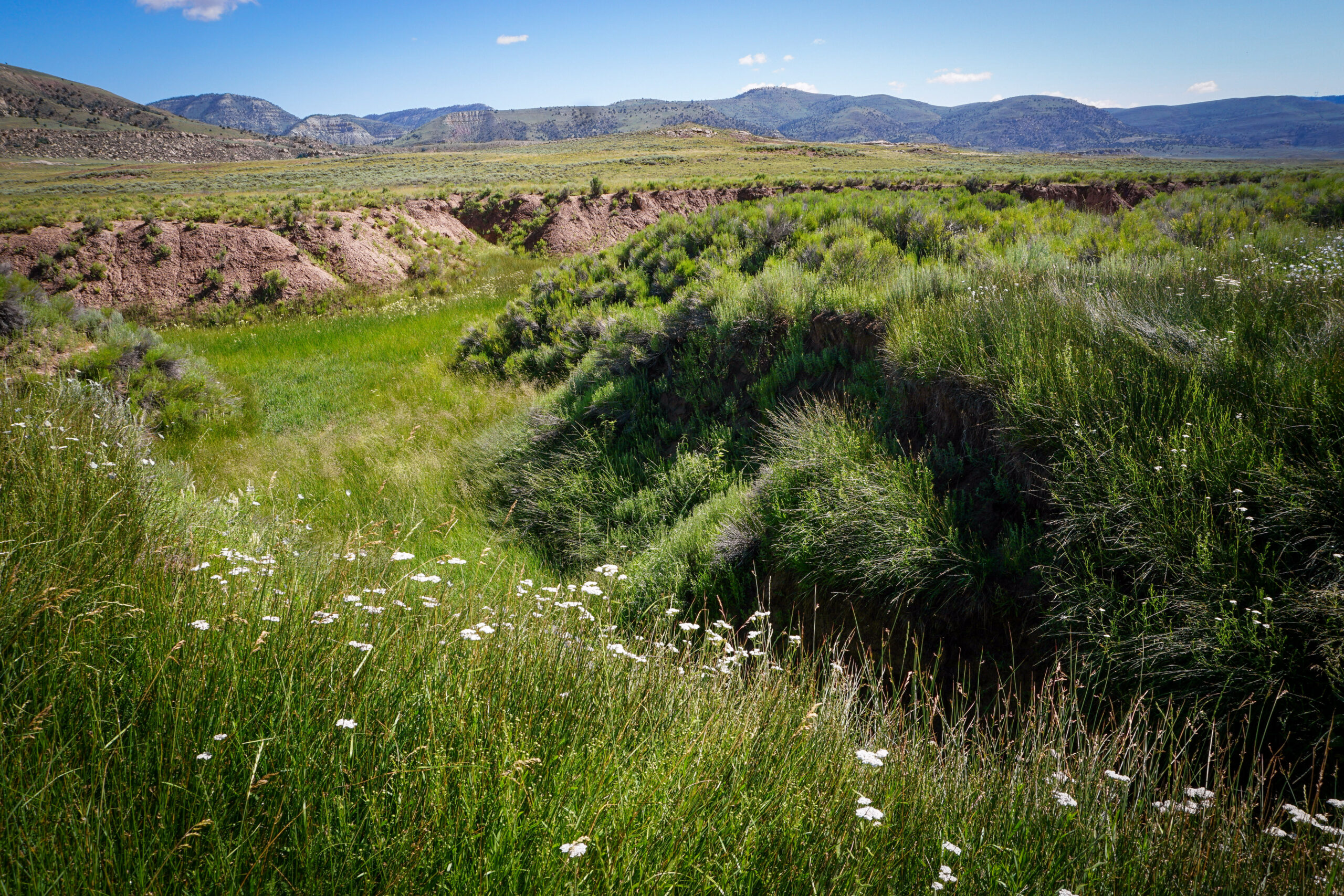
Although this feature is massive and looks as though it’s probably been here for a geologic age, it is a relatively new incised channel. Erosion at the top of the channel, where a nick into the wet meadow or “headcut” has formed, is rapidly growing the gully.
Channels like this one, albeit in smaller form, are opening up all over this wet meadow—indeed, all over Utah and in other similar places across the intermountain West.
“My family’s been in the same place for 100 years,” said Bill Butcher, a neighboring landowner and Chairman of the Price River Watershed Conservation District. “Stories that get told from years and years ago show the changes this landscape has seen. You’ll hear that a wash that’s now thirty feet deep, people used to be able to drive cars across. And in those days cars were not off-road vehicles; we’re talking like a Ford Model T driving over what used to be a little gully!”
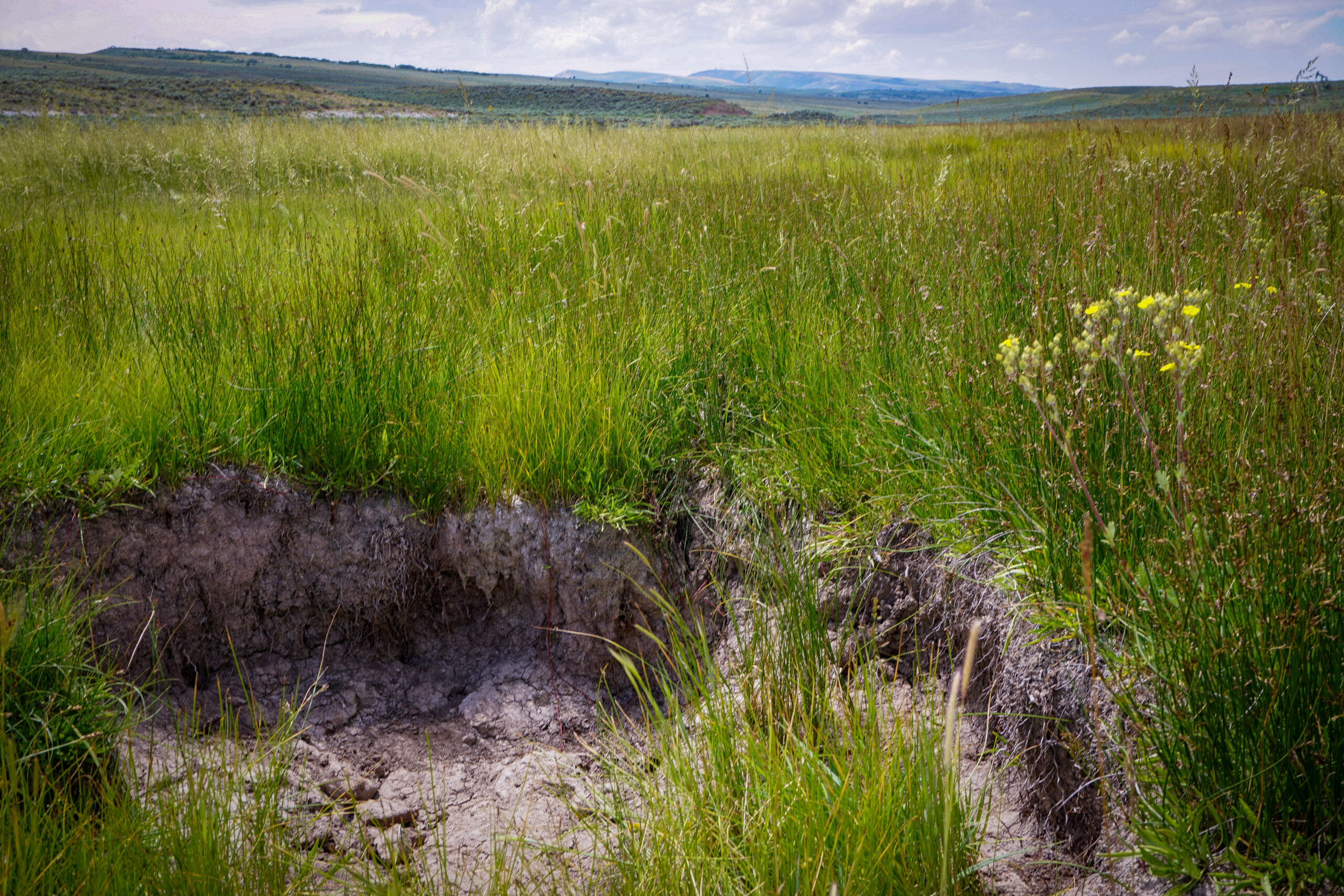
Cook described the process of channel growth or “headcutting” as cyclical.
“We get summer monsoons that dump a lot of rain in a small area all at once,” he said. “If things aren’t functioning properly, we’ll see plant roots get exposed within a headcut, and when those roots get exposed the vegetation dies.”
Because healthy plant roots are soil stabilizers, this leaves the headcut area at the top of incised channels vulnerable to erosion. “Then when another monsoon comes, you might lose inches or feet as the headcut moves up the valley in a single event,” Cook said.

In a healthy wet meadow, water spreads out across saturated soils and can remain damp and productive during drier parts of the year. But when channels form, that water drains away much more rapidly, drying out and degrading the wet meadow and surrounding habitat.
“In the grand scheme of the landscape, these wet meadows are such a small percentage of area,” Cook said. “But they’re highly utilized by a lot of different species—whether via direct utilization of the vegetation as forage, or indirectly because they produce bugs that other wildlife eat.”
Cook said that communities and businesses are also affected when wet meadows degrade due to the loss of valuable forage they provide livestock.
Part 3: The Solution

This past July, a group of nearly 40 federal, state, and private partners dedicated to wetland restoration gathered in this particular wet meadow on private land in Carbon County, Utah, to learn how to directly address the problem of channel incision in wet meadows.
Participants in this workshop, which was hosted by a joint effort between the USFWS, the UDWR, the USDA Natural Resources Conservation Service (NRCS), Utah State University (USU) Extension, the Bureau of Land Management (BLM), the Intermountain West Joint Venture (IWJV), and private landowners and partners, learned in the most active way possible: by getting elbow-deep in soil and mud to help heal the meadow.
Federal, state, and private partners build several Zeedyk structures to address headcuts and gully erosion in a wet meadow as part of a recent workshop hosted by USFWS, UDWR, NRCS, USU, BLM, and private partners.
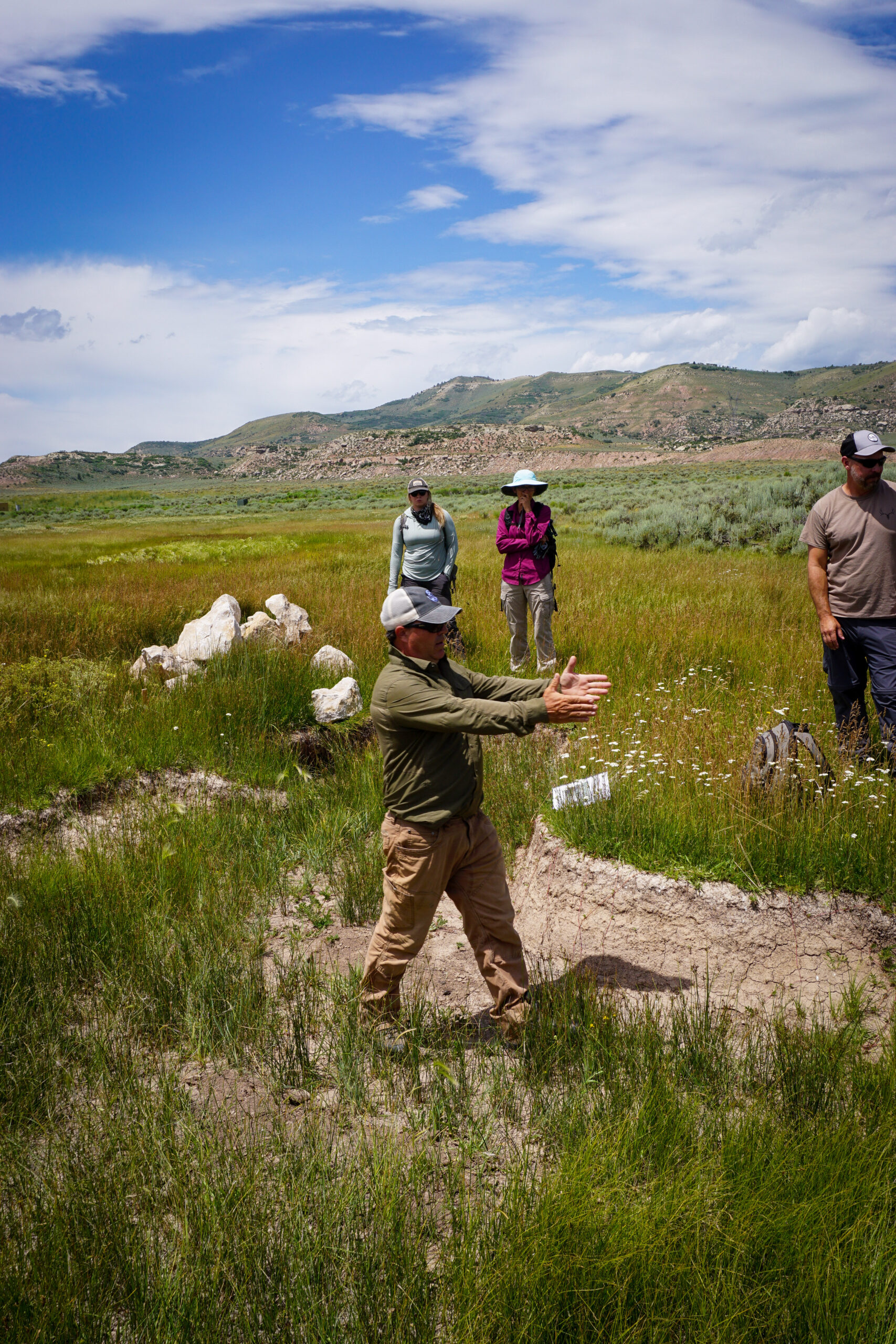
The rock structures that they built to prevent headcuts from further erosion and restore incised gullies—colloquially called “Zeedyks” in honor of Bill Zeedyk, the riparian restoration expert who developed their design—are examples of low-tech, process-based restoration. Such restoration methods are designed to address the natural processes that maintain and promote healthy wetland and riparian systems. The thinking behind the approach is sophisticated, but the materials and techniques are simple and inexpensive, like hand-built rock and wood structures.
Shawn Conner of BIO-Logic, Inc (pictured), along with Jeremy Maestas of NRCS Working Lands for Wildlife, instructs workshop participants to construct a Zeedyk that will shore up the headcut behind him.
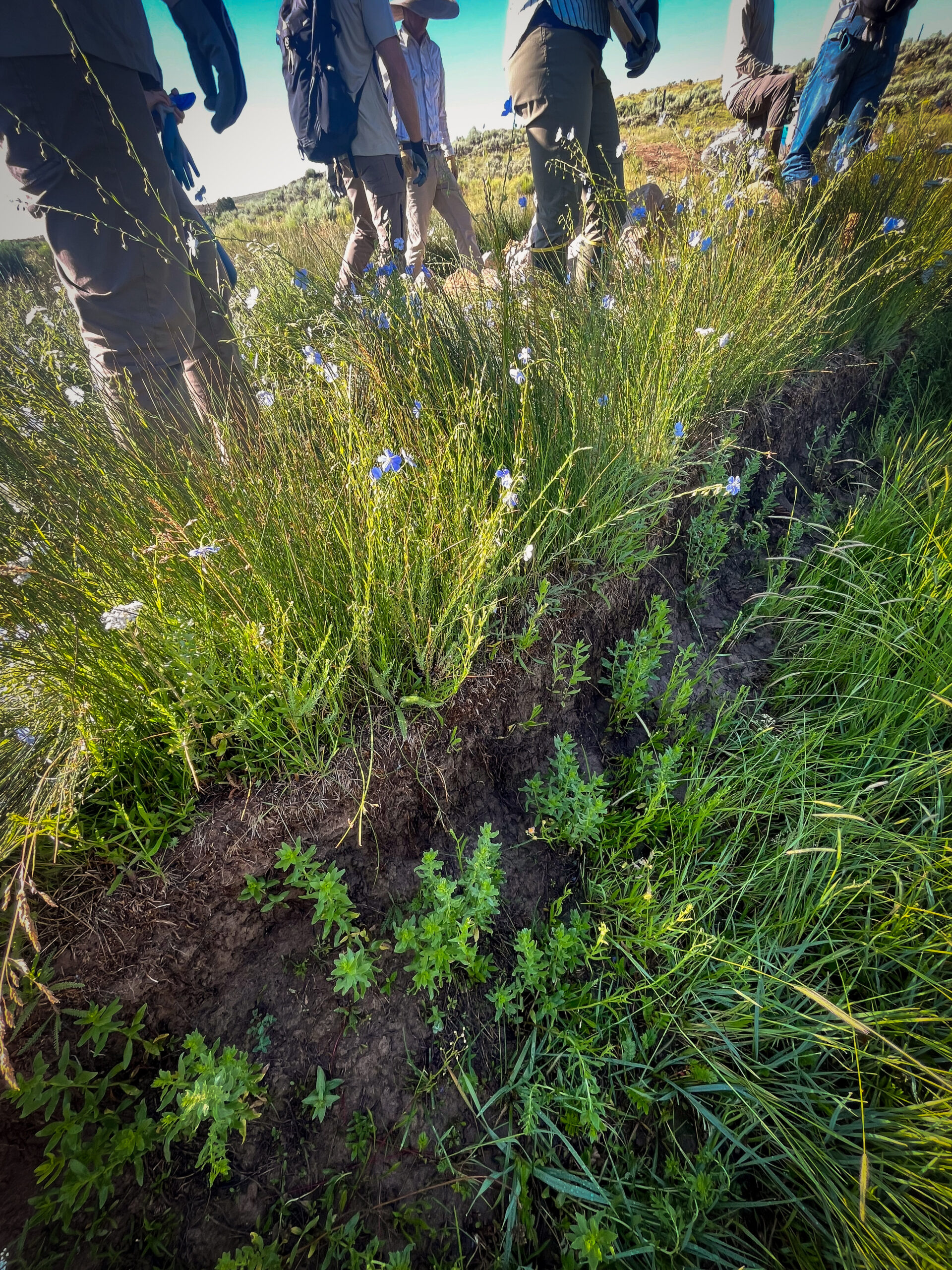
This workshop was hosted as part of ongoing mesic habitat restoration work that UDWR’s Watershed Restoration Initiative (WRI) is currently performing across the state of Utah, in partnership with the USFWS Partners for Fish and Wildlife Program, federal agencies like the BLM, NRCS, and U.S. Forest Service, the IWJV’s Partnering to Conserve Sagebrush Rangelands , and private landowners.
Exposed plant roots at the edge of an incised channel in a wet meadow.
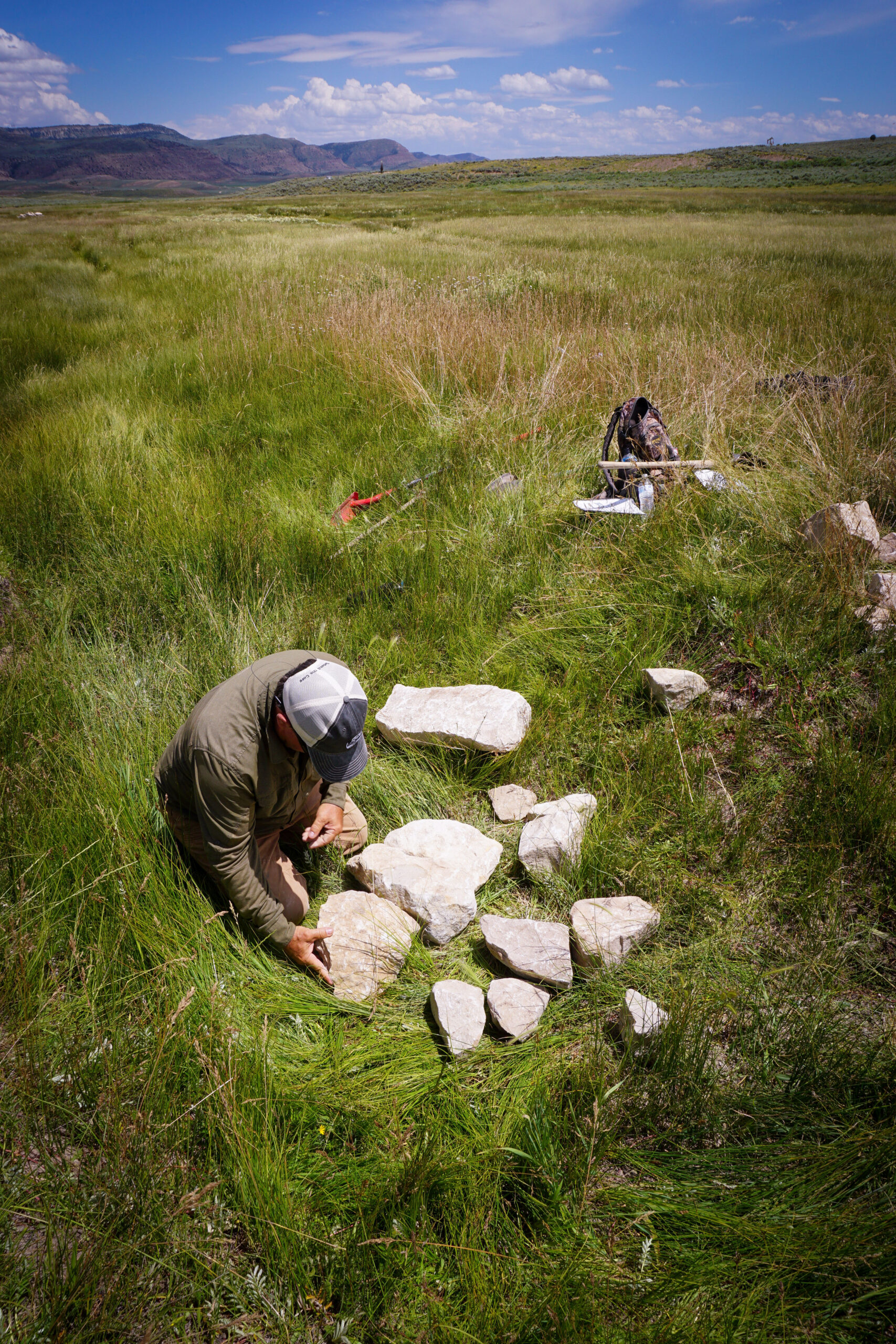
“There’s a sense of urgency when it comes to repairing these headcuts in wet meadows,” Cook said. “We want to get them protected, treated, and healed as soon as possible. And the more time we spend out here, the more work we find.”

Restoration of mesic wetland and riparian systems is only one of many kinds of sagebrush habitat conservation work that UDWR is undertaking through WRI, which has accomplished over 2,500 habitat restoration projects in the state of Utah since its inception in 2006.

In 2022, the Biden Administration committed $10 million per year over the next five years to the USFWS for the purposes of sagebrush ecosystem restoration using the Bipartisan Infrastructure Law (BIL). To implement this unprecedented funding towards projects like mesic restoration, which keeps needed water in sagebrush ecosystems for longer, the USFWS is leveraging partnerships that are long-standing and proven across 13 Western states—like their collaboration with UDWR and WRI in Utah, for example.

To conservation program coordinators like Wirick, it’s especially important that this partnership will help direct BIL funding to habitat and infrastructural improvements on privately held working lands, including the property that generously hosted July’s Zeedyk workshop.
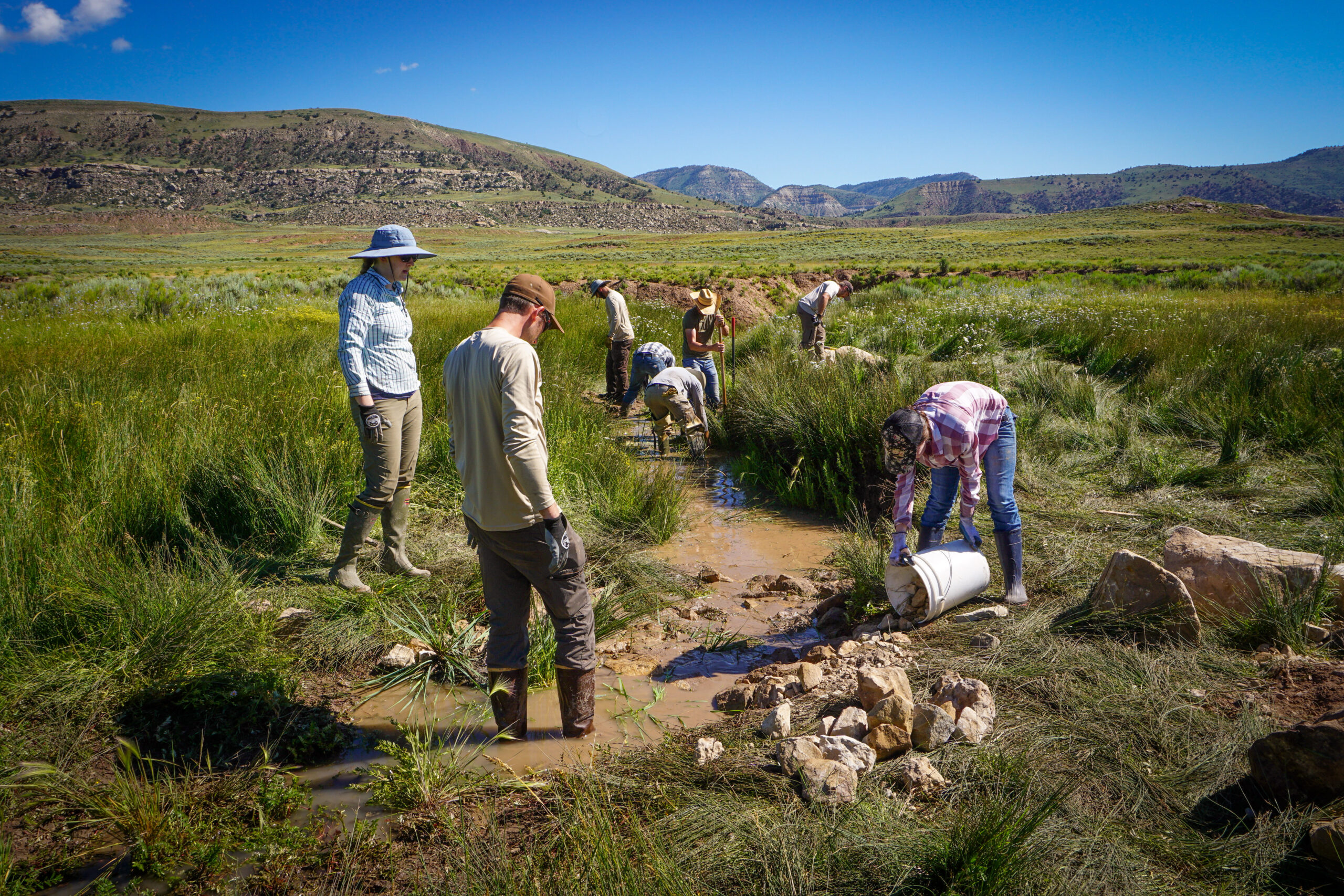
“It’s very easy for everyone to see just how important these wet meadows are,” he said. “Therefore, it’s easy to put past frustrations, issues, or concerns to the wayside and work together on these areas. The fact that these wet meadow areas are important to landowners, and they want to preserve them and keep that preservation in mind as they make future management decisions, is really great.”
At the top of the incised channel, the rock rundown Zeedyk structure is just about complete. It has stabilized the headcut and slowed the flow of water to preserve the wet meadow habitat.
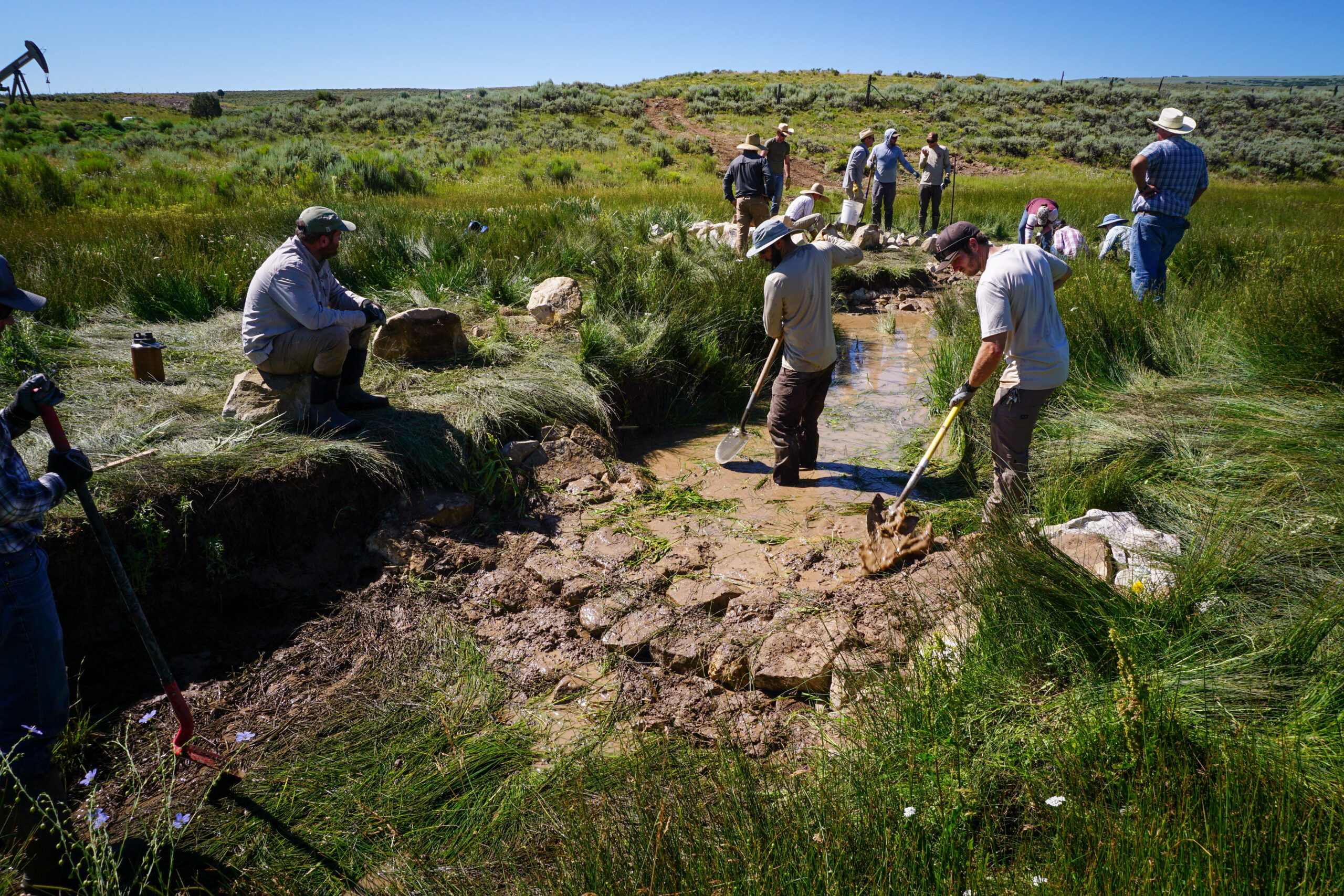
Cook concurred.
“It takes a lot of guts for a private landowner to invite a government employee onto their land,” Wirick said. “The purpose of this BIL funding was to support sagebrush landscapes that are important for wildlife, but it’s also targeted to these rural communities. So it’s nice as a federal employee to go to a landowner and say, ‘This Bipartisan Infrastructure Law that you heard about on the news is actually meaningful to you as an individual in rural Utah, to your rural landscape, and to your working lands.’”
Meanwhile, further down the gully, workshop participants are finishing up a “one rock dam” zeedyk structure. By integrating mud and extra gravel they have made it nearly watertight, so that water is forced to slow and create a pool behind it.
See how zeedyk structures can change the landscape:


Left: A drainage gully in a wet meadow prior to treatment. Right: Zeedyk structures can help capture water and sediment, reducing headcutting and restoring the wet meadow sponge.
“The landscape is interconnected in so many ways. There’s the ecology of the landscape, with all the different habitat types feeding each other and taking from each other. But also what makes the landscape interconnected is the social aspect. From landowners, and people making use of multiple aspects of public and private land; to Indigenous people and the areas that they hold important; and even recreationists that live in cities; they are all part of connecting, stitching up the landscape together.”
– Clint Wirick, USFWS
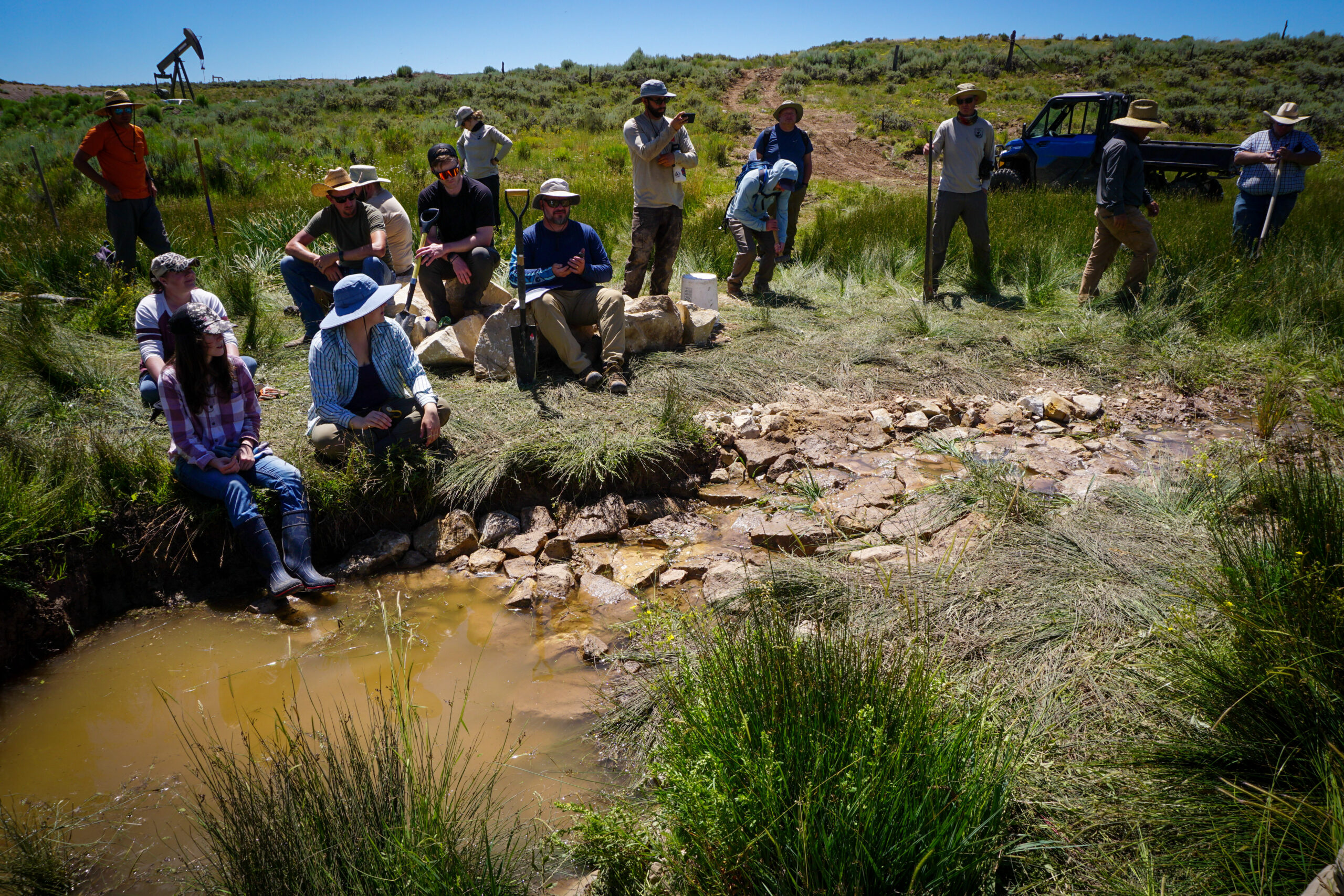
At the close of the workshop, participants sat on the banks of the incised channel to assess their work. What had been a gully through which water was quickly flowing and causing further erosion had been transformed into a slow-moving riparian corridor.
Over time, the water will spread and keep this wet meadow habitat intact.

Within minutes of the group completing the Zeedyk structure, the slow-moving water was taken over by juvenile toads and insects that pollinate native plants and feed wildlife.
In time, native water-loving grasses, rushes and forbs will grow up through the structure’s rock, rendering it nearly invisible.
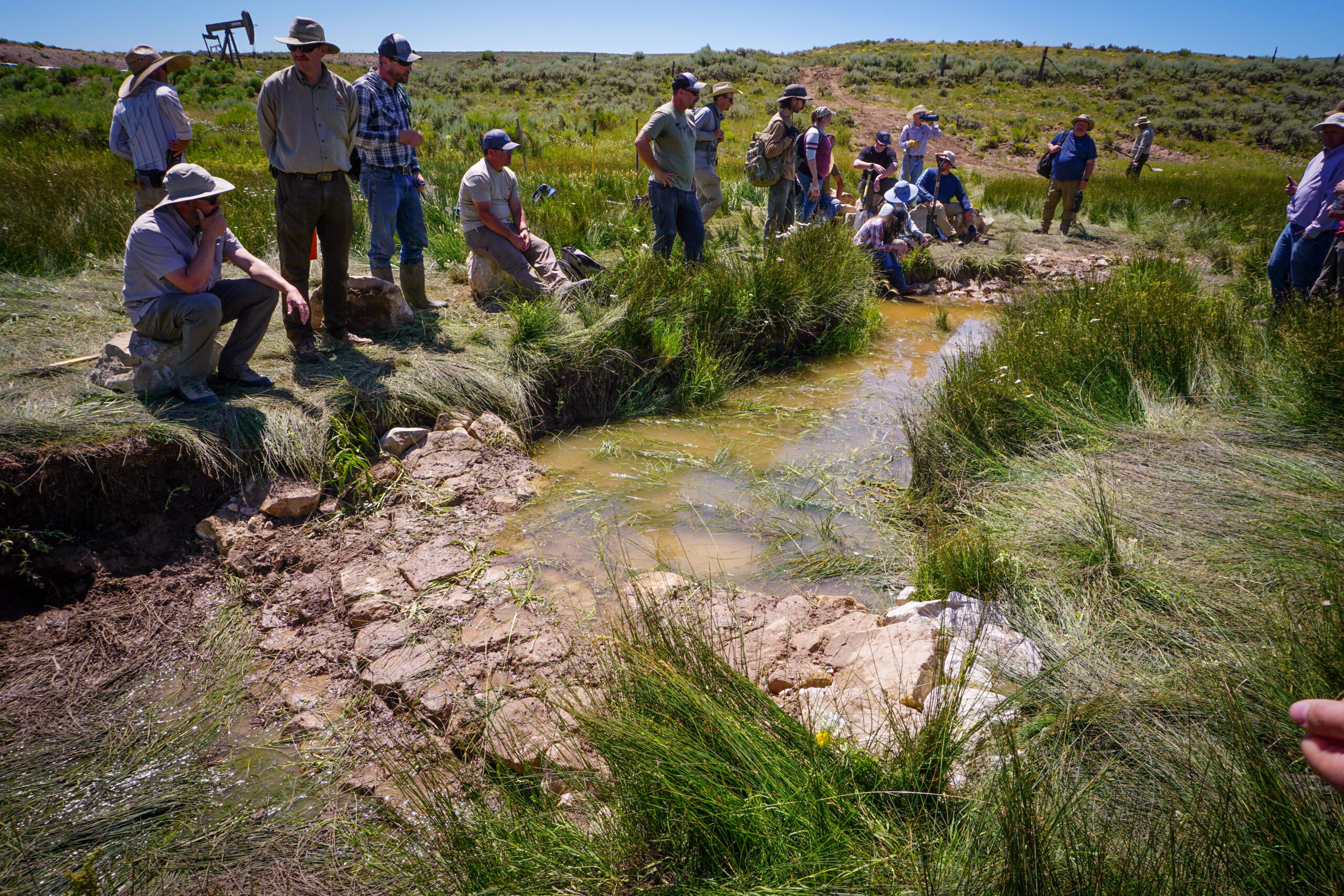
In the next few years, Bipartisan Infrastructure Law funding will be supporting many sagebrush ecosystem restoration projects in this same way—by leveraging partnerships that are getting things done at the state and local level across the West.
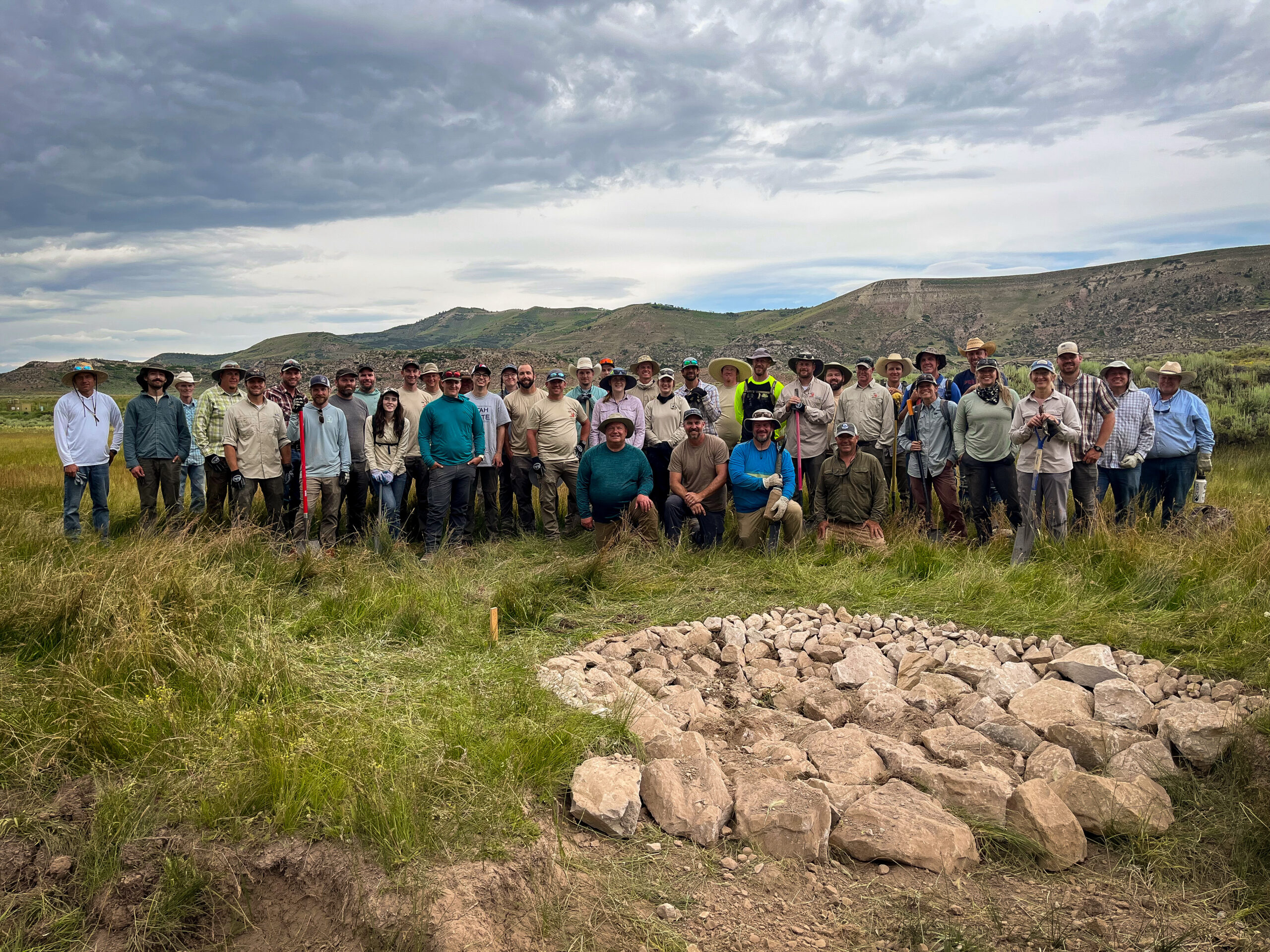
“The landscape is interconnected in so many ways,” Wirick said. “There’s the ecology of the landscape, with all the different habitat types feeding each other and taking from each other. But also what makes the landscape interconnected is the social aspect. From landowners, and people making use of multiple aspects of public and private land; to Indigenous people and the areas that they hold important; and even recreationists that live in cities; they are all part of connecting, stitching up the landscape together.”
Many thanks to the hosts and sponsors of this workshop, including the Utah Division of Wildlife Resources , Utah’s Watershed Restoration Initiative , the USFWS Partners for Fish and Wildlife Program , USDA NRCS Working Lands for Wildlife , the Intermountain West Joint Venture’s Partnering to Conserve Sagebrush Rangelands effort, the Bureau of Land Management , and the Utah State University Extension .
Want to learn more about low-tech, process-based restoration? Are you potentially interested in implementing these wetland restoration techniques within your local landscape? The IWJV has the info you need! Please contact us here and we will be in touch. Meanwhile, click here to learn more, and click here for a free virtual version of the workshop described in this story.
